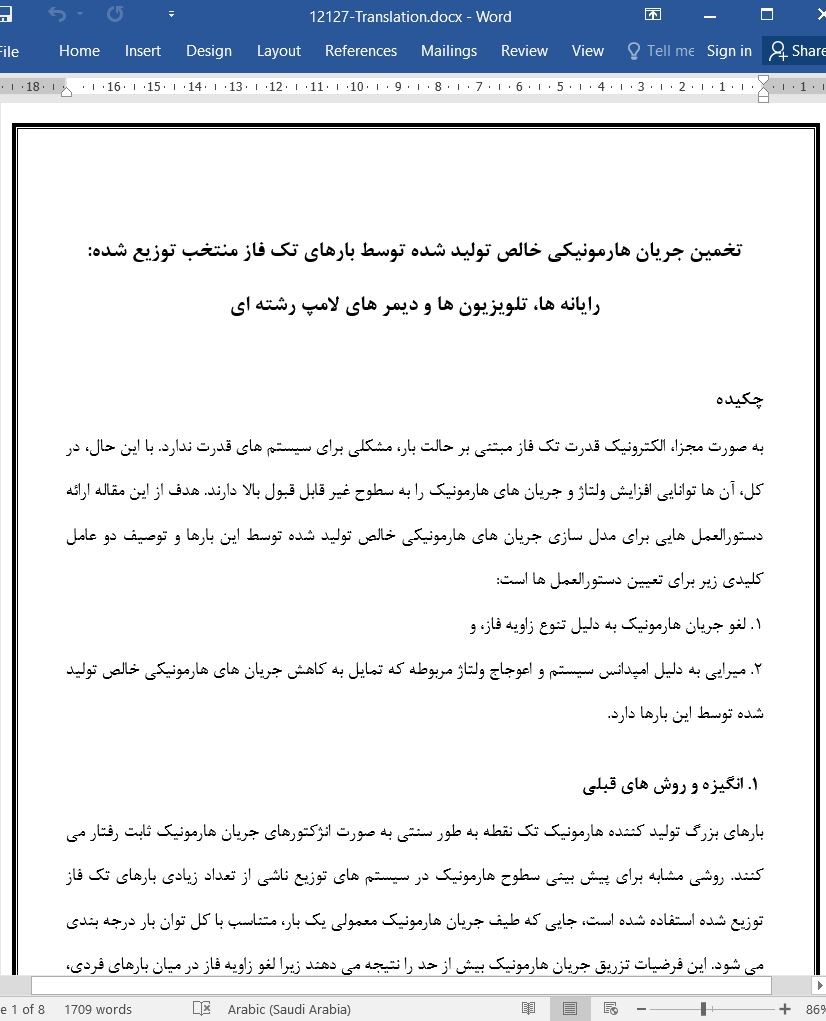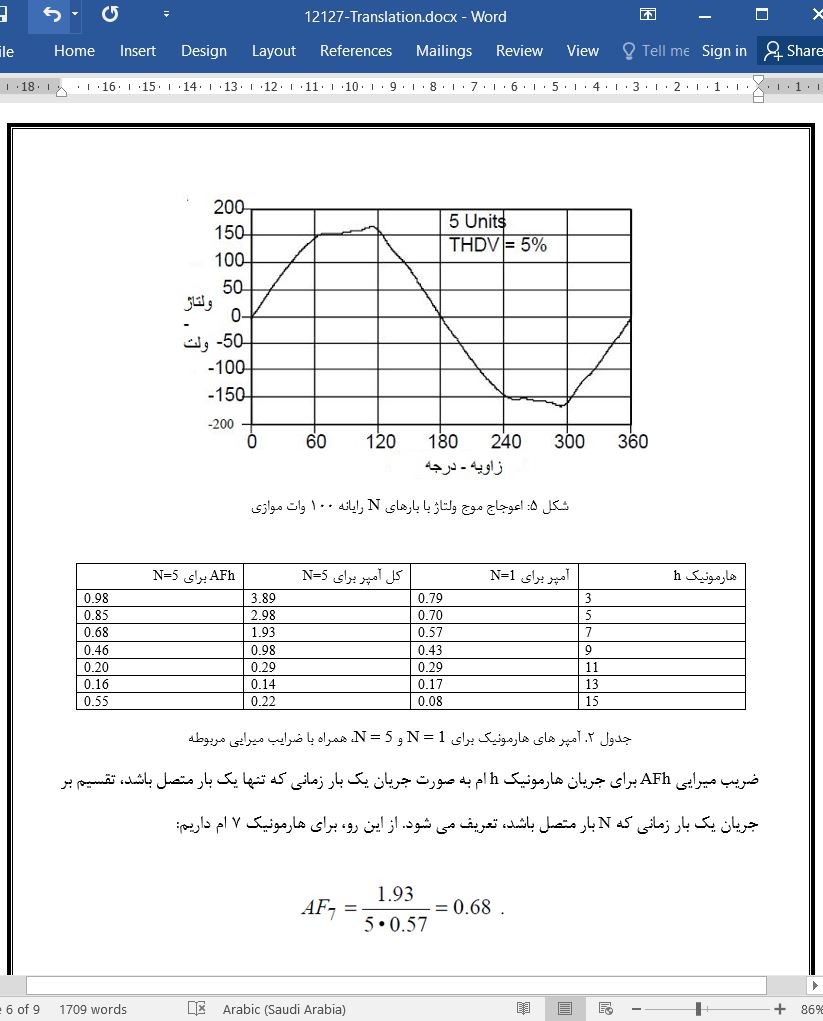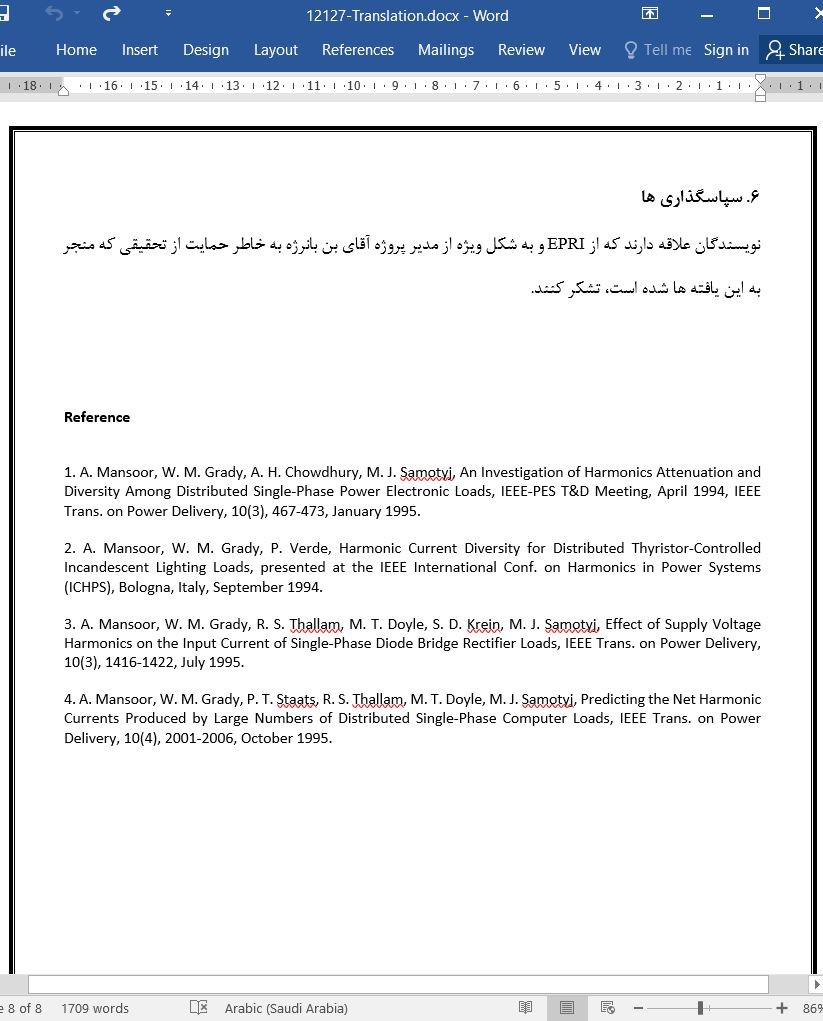
تخمین جریان هارمونیکی خالص تولید شده توسط بارهای تک فاز منتخب توزیع شده
چکیده
به صورت مجزا، الکترونیک قدرت تک فاز مبتنی بر حالت بار، مشکلی برای سیستم های قدرت ندارد. با این حال، در کل، آن ها توانایی افزایش ولتاژ و جریان های هارمونیک را به سطوح غیر قابل قبول بالا دارند. هدف از این مقاله ارائه دستورالعمل هایی برای مدل سازی جریان های هارمونیکی خالص تولید شده توسط این بارها و توصیف دو عامل کلیدی زیر برای تعیین دستورالعمل ها است:
1. لغو جریان هارمونیک به دلیل تنوع زاویه فاز، و
2. میرایی به دلیل امپدانس سیستم و اعوجاج ولتاژ مربوطه که تمایل به کاهش جریان های هارمونیکی خالص تولید شده توسط این بارها دارد.
1. انگیزه و روش های قبلی
بارهای بزرگ تولید کننده هارمونیک تک نقطه به طور سنتی به صورت انژکتورهای جریان هارمونیک ثابت رفتار می کنند. روشی مشابه برای پیش بینی سطوح هارمونیک در سیستم های توزیع ناشی از تعداد زیادی بارهای تک فاز توزیع شده استفاده شده است، جایی که طیف جریان هارمونیک معمولی یک بار، متناسب با کل توان بار درجه بندی می شود. این فرضیات تزریق جریان هارمونیک بیش از حد را نتیجه می دهند زیرا لغو زاویه فاز در میان بارهای فردی، و میرایی ناشی از امپدانس سیستم و اعوجاج ولتاژ، نادیده گرفته می شوند.نتایجی که در این مقاله نشان داده می شوند، و نتیجه گیری در مورد لغو و میرایی زاویه فاز، بر اساس مدل های آنالیزی و شبیه سازی مونت کارلو هستند. اندازه گیری های واقعی در صورت امکان برای تایید نتایج شبیه سازی استفاده شده اند.
Abstract
Individually, single-phase power electronic-based loads pose no problem to power systems. In total, however, they have the potential to raise harmonic voltages and currents to unacceptably high levels. The purpose of this paper is to give guidelines for modeling the net harmonics currents produced by these loads, and to describe the following two key factors used to determine the guidelines: harmonic current cancellation due to phase angle diversity, and attenuation due to system impedance and the corresponding voltage distortion that tend to reduce the net harmonic currents produced by these loads.
1. Motivation and Previous Methods
Large single-point harmonics-producing loads have been traditionally treated as fixed harmonic current injectors. The same method has been used to predict the harmonic levels in distribution systems caused by large numbers of distributed single-phase loads, where the typical harmonic current spectrum of one load is scaled in proportion to total load power. These assumptions result in an overestimation of harmonic current injection because phase angle cancellation among the individual loads, and attenuation caused by system impedance and voltage distortion, are neglected.
چکیده
1. انگیزه و روش های قبلی
2. لغو جریان های هارمونیکی به دلیل تنوع زاویه فاز
3. میرایی جریان های هارمونیک به دلیل امپدانس و اعوجاج ولتاژ
4- تخمین جریان هارمونیکی خالص تولید شده توسط رایانه های دسکتاپ و دیمر های لامپ
5. نتیجه گیری و یافته های کلیدی
6. سپاسگذاری ها
منابع
Abstract
1. Motivation and Previous Methods
2. Cancellation of Harmonic Currents Due to Phase Angle Diversity
3. Attenuation of Harmonic Currents Due to System Impedance and Voltage Distortion
4. Estimates of the Net Harmonic Currents Produced by Desktop Computers and Light Dimmers
5. Conclusions and Key Findings
6. Acknowledgments
References
- اصل مقاله انگلیسی با فرمت ورد (word) با قابلیت ویرایش
- ترجمه فارسی مقاله با فرمت ورد (word) با قابلیت ویرایش، بدون آرم سایت ای ترجمه
- ترجمه فارسی مقاله با فرمت pdf، بدون آرم سایت ای ترجمه



